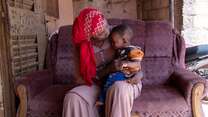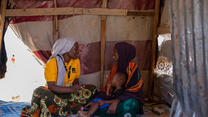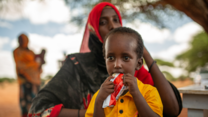WHO WE ARE
The mission of the International Rescue Committee (IRC) is to help people whose lives and livelihoods are shattered by conflict and disaster to survive, recover and gain control of their future. The IRC’s vision is to lead the humanitarian field by implementing high-impact, cost-effective programs for people affected by crisis, and shape global policy and practice by sharing our learning and experience with others.
All IRC programs are designed to achieve meaningful change in people’s health, safety, education, economic wellbeing and ability to influence the decisions that affect their lives. The IRC maintains
a dedicated professional Research, Evaluation and Learning (REL) Technical Unit team to ensure that the organization is both outcomes driven and evidence based in its approach.
What do we mean by outcomes?
The IRC is committed to having a positive impact on the communities we serve by making measurable improvements in their lives in five outcome areas: Health, Safety, Education, Economic Wellbeing and Power.
What do we mean by evidence?
Evidence refers to information that is systematically obtained and analyzed to determine whether, how and why a given intervention works. The IRC identifies, prioritizes and uses the best available information from research studies that indicate and explain causal impact. We generate evidence using rigorous methods that answer the most critical questions for action.
WHY OUR WORK MATTERS
Humanitarian crises are growing at a time when resources are increasingly constrained to address them. Humanitarian agencies have historically not used cost data to compare the efficiency or effectiveness of different programs or delivery models across contexts. As a result, humanitarian policymakers and practitioners have limited access to cost analysis that can help them make more informed decisions about how to spend scarce resources most effectively in a given context. The Best Use of Resources initiative aims to increase the IRC’s own effectiveness, and the effectiveness of the humanitarian system as a whole.
WHAT WE DO
IRC practitioners provide technical assistance to more than 30 country programs. Technical advisors are charged with staying abreast of the best available research and practices in their respective fields and sharing these with the IRC’s frontline teams. They also lead advocacy strategies to encourage partners and policy makers to adopt the interventions proven to be effective based on our research and experience.
To ensure that funds for humanitarian programs are targeted most efficiently, the IRC is working to determine how the organization and the wider humanitarian community can best apply its resources. The aim is to improve the IRC and humanitarian system’s efficiency and effectiveness by gathering evidence about the costs of different interventions and creating tools and processes to direct available resources toward achieving programs that have the greatest reach and impact.
HOW WE DO IT
Comparing the costs of programs, otherwise called “cost efficiency” analyses, helps humanitarian stakeholders like IRC understand how to be good stewards of resources. However,
we also need to understand which programs result in the most effective outcomes for people we serve, otherwise known as “cost effectiveness” analysis.
At the IRC, we use both cost efficiency and cost effectiveness analyses to explicitly compare the costs and outcomes of different programs to ensure that we make the best use of available resources.
These analyses will support the IRC to compare and cost different approaches and program impact to launch and advocate for humanitarian interventions with high return on investment.
The Best Use of Resources approach includes:
- Using cost analyses systematically in the IRC’s decision making on new programs;
- Updating finance and budget-tracking systems to allow easier cost analysis for future proposals and programs;
- Publishing cost analysis reports for public use, positioning the IRC as a leader in evidence-based programming; and
- Raising awareness and use of cost analysis with other actors in the humanitarian sector, including donors and implementers.
To help the IRC understand how to apply financial resources to achieve the most effective interventions, the Best Use of Resources team published 10 cost efficiency analyses of key IRC program activities, as well as three cost effectiveness analyses of programs that produced impact evaluations.
The results of all the analyses will be shared internally through presentations, webinars, and distributions of reports and guidelines. The IRC also plans to disseminate results from the cost analyses— including guidance on how to increase this evidence in the sector and use it in programming decisions—to policymakers and practitioners.
Building on the initial work that began in 2015 to conduct the costs analyses, the Best Use of Resources team has shifted to supporting production and use of cost analysis by country staff, including developing and piloting tools, as well as providing in-depth training and support to integrate these analyses into decision making about program choice.
After IRC staff have reviewed and incorporated these analyses, the public release of the external cost efficiency and cost effectiveness materials will then encourage the wider humanitarian community to use these analyses to inform their own programming decisions.



